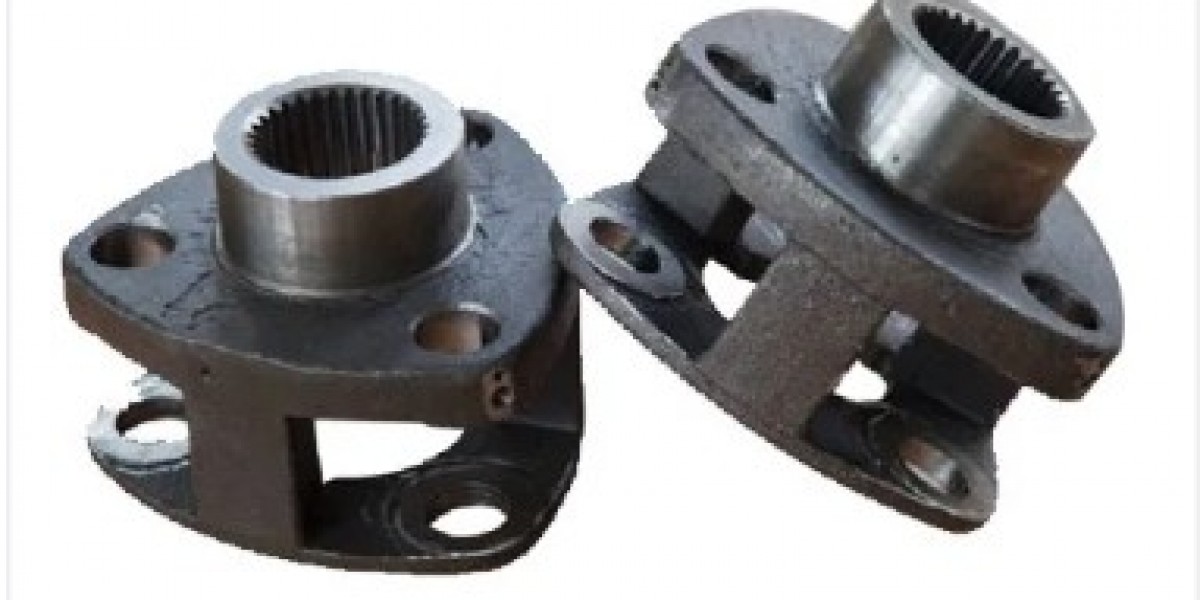Steel casting is a manufacturing process that involves the pouring of molten steel into a mold to create complex shapes and components. This technique has been widely used in various industries, including automotive, aerospace, and agriculture. In the agricultural sector, steel casting plays a crucial role in enhancing tractor performance and durability. This article will delve into the process of steel casting, the advantages it offers in tractor parts, the importance of steel casting in agricultural tractors, the components that utilize steel casting, the benefits ofsteel casting parts in agricultural tractors, and the techniques and quality control measures employed in steel casting.
What is Steel Casting?
Steel casting is a metalworking process that involves the pouring of molten steel into a mold to create intricate shapes and components. It is a highly versatile technique that allows for the production of complex geometries and precise dimensions. The molten steel is poured into the mold, which is typically made of sand, ceramic, or metal. Once the steel cools and solidifies, the mold is removed, leaving behind the desired shape.
The Process of Steel Casting
The process of steel casting involves several steps, including patternmaking, mold preparation, melting and pouring, solidification, and finishing.
Patternmaking: In this initial step, a pattern is created based on the desired shape of the final component. The pattern can be made from wood, plastic, or metal and serves as a replica of the final product.
Mold Preparation: Once the pattern is ready, it is used to create a mold. The mold can be made of sand, ceramic, or metal, depending on the complexity and requirements of the component. The mold is created by packing the material around the pattern and allowing it to harden.
Melting and Pouring: The next step involves melting the steel in a furnace at high temperatures. Once the steel reaches its liquid state, it is poured into the mold through a gating system. The gating system ensures a smooth and controlled flow of molten steel into the mold.
Solidification: After the molten steel is poured into the mold, it begins to cool and solidify. The solidification process is crucial as it determines the final properties and characteristics of the component. Proper cooling and solidification are essential to avoid defects such as shrinkage, porosity, and cracking.
Finishing: Once the steel has solidified, the mold is removed, and the component is extracted. The component may undergo additional processes such as heat treatment, machining, and surface finishing to achieve the desired shape, dimensions, and surface quality.
Advantages of Steel Casting in Tractor Parts
Steel casting offers numerous advantages in the manufacturing of tractor parts. These advantages include:
Design Flexibility: Steel casting allows for the production of complex shapes and intricate designs that are difficult to achieve with other manufacturing processes. This flexibility enables the creation of customized tractor parts that meet specific performance and functionality requirements.
Strength and Durability: Steel is known for its exceptional strength and durability. Steel casting ensures that tractor parts are robust and capable of withstanding heavy loads, vibrations, and harsh operating conditions. This strength and durability contribute to the overall performance and longevity of agricultural tractors.
Cost-Effectiveness: Despite the initial investment required for tooling and equipment, steel casting can be a cost-effective manufacturing process in the long run. The ability to produce complex shapes in a single operation reduces the need for additional machining and assembly processes, resulting in cost savings.
Material Efficiency: Steel casting minimizes material waste as it allows for precise shaping and dimensioning of components. This efficiency translates into cost savings and environmental benefits.
Versatility: Steel casting can be used to produce a wide range of tractor components, including engine blocks, transmission gears, axle housings, and hydraulic system parts. This versatility makes it a suitable manufacturing process for various agricultural applications.
Importance of Steel Casting Parts in Agricultural Tractors
Steel casting parts play a crucial role in enhancing the performance and reliability of agricultural tractors. These parts are subjected to extreme conditions, including heavy loads, high temperatures, and corrosive environments. The use of high-quality steel casting parts ensures that tractors can withstand these conditions and operate efficiently in demanding agricultural settings.
Load-Bearing Components: Steel casting is commonly used in the production of load-bearing components such as engine blocks, transmission gears, and axle housings. These components are subjected to high stresses and forces, and steel casting provides the necessary strength and durability to handle these loads effectively.
Wear-Resistant Parts: Agricultural tractors often operate in abrasive environments, such as fields with rocks, gravel, and debris. Steel casting parts can be engineered to be highly wear-resistant, ensuring that they can withstand the constant friction and impact without premature failure.
Corrosion Resistance: Agricultural tractors are exposed to various corrosive elements, including moisture, chemicals, and fertilizers. Steel casting parts can be manufactured with corrosion-resistant alloys or coatings, protecting them from rust and degradation.
Precision and Consistency: Steel casting allows for the production of tractor parts with precise dimensions and consistent quality. This precision ensures proper fit and alignment of components, contributing to the overall performance and reliability of agricultural tractors.
Components Utilizing Steel Casting in Agricultural Tractors
Several components in agricultural tractors utilize steel casting to enhance their performance and durability. These components include:
Engine Blocks: The engine block is the core component of a tractor's powertrain system. Steel casting is commonly used to manufacture engine blocks due to its strength, heat resistance, and ability to withstand high pressures.
Transmission Gears: The transmission system in agricultural tractors requires gears that can handle heavy loads and provide smooth power transfer. Steel casting enables the production of transmission gears with precise tooth profiles and high strength, ensuring efficient and reliable operation.
Axle Housings: Axle housings support the weight of the tractor and transmit power to the wheels. Steel casting provides the necessary strength and rigidity to withstand the forces and vibrations experienced by the axle system.
Hydraulic System Components: Agricultural tractors rely on hydraulic systems for various functions, including lifting and lowering implements, steering, and braking. Steel casting is used to manufacture hydraulic system components such as cylinders, valves, and pump housings, ensuring their durability and performance.
Benefits of Steel Casting Parts in Agricultural Tractors
The use of steel casting parts in agricultural tractors offers several benefits, including:
Improved Performance: Steel casting parts enhance the overall performance of agricultural tractors by providing the necessary strength, durability, and precision. This results in improved power transmission, reduced downtime, and increased productivity.
Extended Lifespan: Steel casting parts are designed to withstand the demanding conditions of agricultural operations. Their strength, wear resistance, and corrosion resistance contribute to the extended lifespan of tractors, reducing maintenance costs and downtime.
Enhanced Safety: The reliability and durability of steel casting parts contribute to the safety of agricultural tractors. Components such as engine blocks, transmission gears, and axle housings are critical for safe operation, and their failure can lead to accidents and injuries.
Reduced Maintenance: Steel casting parts require minimal maintenance due to their robustness and resistance to wear and corrosion. This reduces the need for frequent repairs and replacements, resulting in cost savings and increased uptime.
Compatibility and Interchangeability: Steel casting parts are designed to be compatible and interchangeable with original equipment manufacturer (OEM) components. This ensures easy replacement and availability of spare parts, minimizing downtime and improving serviceability.
Steel Casting Techniques and Quality Control
Steel casting involves various techniques and quality control measures to ensure the production of high-quality components. These techniques include:
Simulation and Modeling: Advanced computer-aided design (CAD) and simulation software are used to model and simulate the casting process. This allows for the optimization of mold design, gating system, and solidification parameters, ensuring the production of defect-free components.
Material Selection: The selection of the appropriate steel alloy is crucial in steel casting. Factors such as strength, heat resistance, corrosion resistance, and wear resistance are considered to ensure that the material meets the specific requirements of the tractor component.
Quality Control: Quality control measures are implemented throughout the steel casting process to ensure the production of components that meet the required specifications. Non-destructive testing techniques, such as X-ray inspection and ultrasonic testing, are used to detect any defects or irregularities in the castings.
Heat Treatment: Heat treatment processes, such as annealing, quenching, and tempering, are employed to enhance the mechanical properties of steel casting parts. These processes improve the strength, hardness, and toughness of the components, ensuring their suitability for agricultural applications.
Conclusion
Steel casting plays a vital role in enhancing tractor performance and durability in the agricultural sector. The process of steel casting allows for the production of complex shapes and precise dimensions, providing design flexibility and material efficiency. Steel casting parts offer numerous advantages, including strength, durability, cost-effectiveness, and versatility. These parts are crucial in load-bearing components, wear-resistant parts, and corrosion-resistant parts in agricultural tractors. The use of high-quality steelcasting partsimproves tractor performance, extends their lifespan, enhances safety, and reduces maintenance requirements. Various techniques and quality control measures are employed in steel casting to ensure the production of defect-free components. Overall, steel casting is a valuable manufacturing process that contributes to the advancement of agricultural tractors and the efficiency of agricultural operations.
The Importance of Steel Casting Parts in Agricultural Tractors







